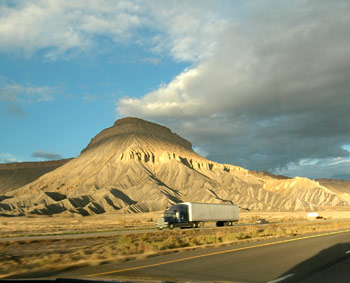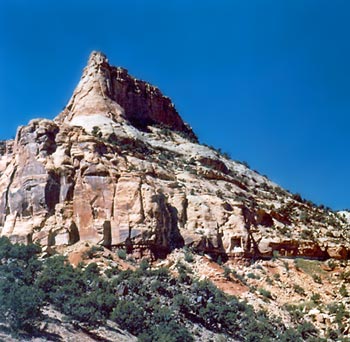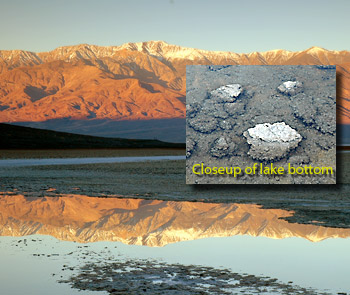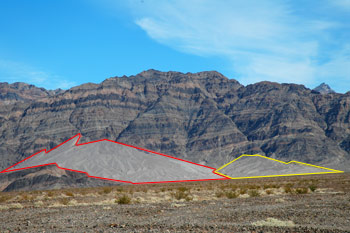They make up about 25% of the worlds land mass outside of the polar regions. They are not randomly scattered around the globe. The most extensive desert regions are located between 20 and 30 degrees above and below the equator. They line up with the descending dry air shown earlier.
Some deserts are located far inland and are land locked. They are far from sources of moisture.
Another variety is found where there is a high mountain range that prevents moist air from reaching across the range. The moist air is forced upward and then deposits its moisture as rain in the mountains. The area beyond becomes starved for rain.
Another desert may be created when it is located along the ocean, but at a point where cool ocean currents rise, providing low moisture air. This air may have sufficient water to create fog, but insufficient water to create rain.
Finally, some desert environments are located near the poles where water remains frozen. They are dry areas, but differ from traditional deserts in one way, they may have vast stores of water underground, but it is in a frozen state.
The record high temperature in a desert was measured in Libya and was 57.7° C or 136° F. Similar temperatures have been measured in Death Valley in California 134° F. The hot days bake the rocks and air and make the warm air rise over a desert environment, hence the cool air ours in to fill the loss and thus deserts are often windy places.
The Santa Ana winds coming of the deserts in Southern California have gusted up to 100 miles per hour.

Mesa - Zion Utah

USGS: Source Desert Varnish on rock face
Colordao National Monument, Colorado
Distinctive land forms in include:
A butte : an isolated steep sided hill, often pillar like.
A mesa: a flat topped hill with very steep sides.
Desert Varnish: a darkening of the rock or floor probably due to manganese oxide. It turns the rock or floor much darker red to a small depth.
Most large deserts have streams that flow into them but never out again. The streams either evaporate or soak into the ground. (A major exception is the Nile river which has enough water to even survive the desert it mainly flows though.)
An ever present danger in the desert is the "flash flood". Since there is little old up in the soil due to plants, water will quickly seek the fastest and easiest path down. Hence local rain may create a fast build up of soil saturated water then move like a wave though previous channels until it is absorbed by the ground.
They tend to easily undercut their sides and cause additional cave-ins along the banks.
Alluvial fans are often found in desert regions where streams rush down from mountains onto the desert floor. When there are many canyons relatively close together, the set of alluvial fans form a structure called a bajada (Ba-ha-da). It tends to undulated along the edges of the hills.
A lake on the desert floor is called a playa and is usually only a temporary structure. There is rarely sufficient water to keep the lake wet, so it forms for a few days or weeks and then evaporates and is absorbed by the floor. It is often covered with a white or grey surface from the evaporates left behind. These are sometimes important deposits of chemicals.
Pediment: looks like a mini mountain range with weathered channels running through it. Has a hard core with somewhat step sides, and is surrounded with what looks like low alluvial fans.
Inselbergs: stand alone large mountain like structures that protrude from a plain. Ares Rock in Australia is a prime example. Typically made up of a weathering resistant material located in a well weathered plain.
Closeup of lake bottom shows chemical precipitates


| NEXT | TOC | PREV |